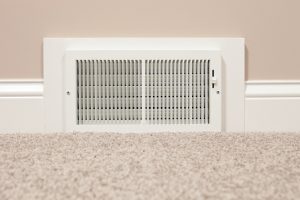 What’s that tip, you ask? Use your ceiling fans!
What’s that tip, you ask? Use your ceiling fans!
You may be wondering about this tip—aren’t ceiling fans just good in the summertime? And even if you used your ceiling fan, isn’t that just eating up more electricity? How can you be boosting energy efficiency, then?
Hear us out! Below we’ve outlined just how ceiling fans work, and why they make a great addition to your home in the summertime in addition to the wintertime. Read on, and don’t forget to contact our team when you need expert heating services in Waterloo, IA.
How Ceiling Fans Cool
Here’s the thing—ceiling fans don’t cool, but they do help with the cooling process overall.
There’s a fan in your air conditioner, right? Well, this fan alone can’t lower the temperature, nor can a ceiling fan. There are a number of components working together with that fan that allows your cooling system to bring you comfort, like:
- Refrigerant, which transfers heat from the inside air to expel it outdoors.
- An indoor coil to help absorb heat and cool the air down.
- A compressor pressurizes the refrigerant, allowing it to do its job.
Without each of these components and more, all any fan can really do is recycle warm, stale air already present in your home. A fan doesn’t do anything but move air around. However, that’s all it needs to do when you use it with your air conditioner!
How a Fan Boosts Efficiency
When you run your ceiling fan with your forced-air HVAC system, to help to more evenly distribute that air. A stagnant vent on its own can’t move air through the home as effectively as you’d like, in most cases. But this is what makes a ceiling fan so helpful.
By helping to distribute the air, ceiling fans cool (or heat) the rooms in your home faster, and allow your air conditioner to shut off faster. In fact, you can probably even turn your thermostat up a few degrees, which means your AC system won’t run as long—this is where the energy savings come in.
As we mentioned above, a ceiling fan can’t cool your home on its own, but it can help you feel cooler, by evaporating the sweat from your body with ease. This is why you feel cooler standing in front of a fan—not because it’s actually cooling the air.
Using a Ceiling Fan to Boost Heating Efficiency
Okay, now that you understand the process of a ceiling fan, what does this have to do with heating efficiency?
The same concept we used to describe how it helps your air conditioner applies to your heater as well. Your ceiling fan actually has a switch on it, that you can most often find near the center of the fan where the light fixture mounts, which reverses the direction of the fan blades. The clockwise direction helps to move heat more evenly throughout your living space.
Using a ceiling fan, in reverse, along with your heater means your heater doesn’t have to work as hard—allowing it to work more efficiently and save you money.
At Dalton Plumbing, Heating, Cooling, Electric and Fireplaces, Inc., your comfort is our promise! To set up an appointment, give us a call or schedule an appointment online.
